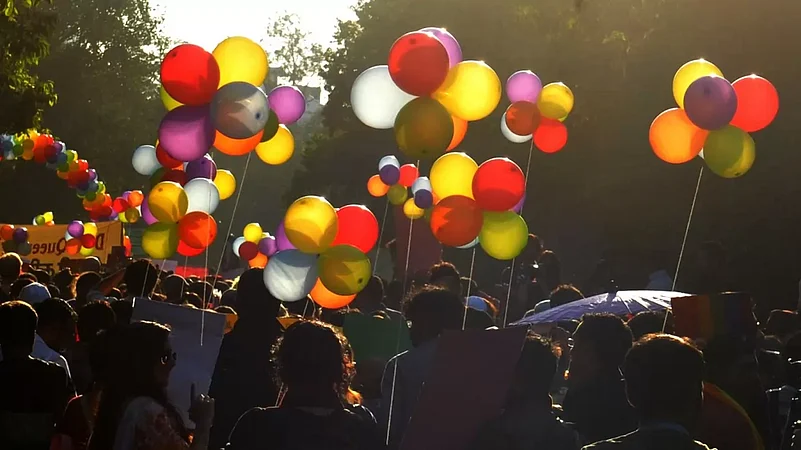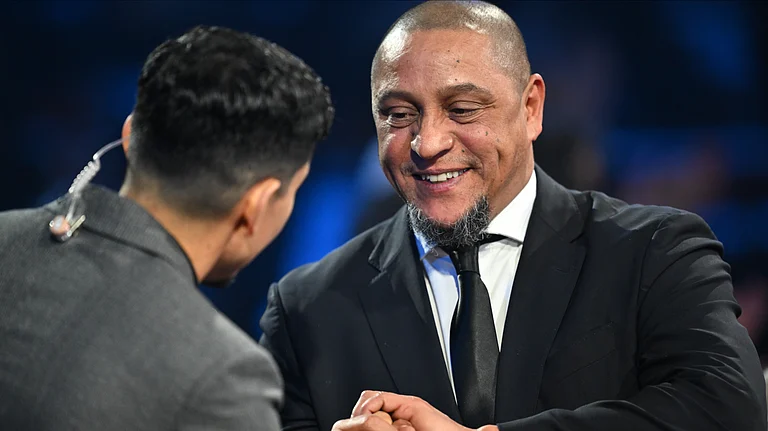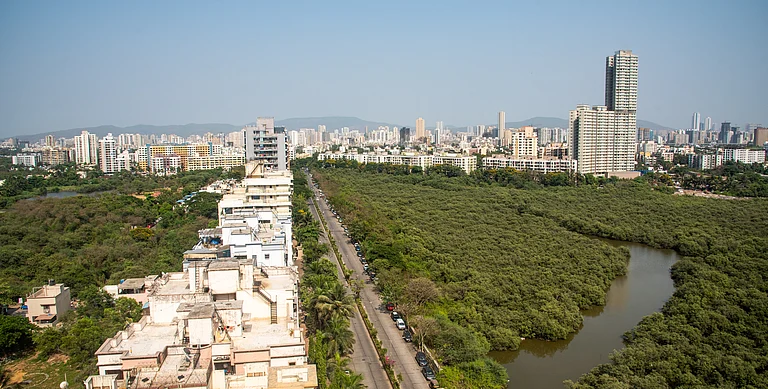Ever since their student days at Ambedkar University, Aroh Akunth has worked to foster community spaces that centre the principles of queer liberation and caste abolition. As the curator and founder of the Dalit Queer Project and the Dalit Art Archive, they’re all too familiar with both the possibilities and limits of the archive as a tool. Undoubtedly Dalit Queer people have always existed, but their histories face the brunt of multi-pronged historical campaigns of invisibilisation, policing and surveillance for their caste identity and their sexuality. “How do you remember someone you do not know?” asks Akunth.
There’s this idea that queerness is a new concept to be explored and asserted that ‘older’ identity markers and struggles need to cede space. This is true, in a sense, because ‘queerness’ as we understand it today is a socially-constructed category, not to mention one that has been reclaimed (to an extent) from a slur. Conversations exploring desire, anti-caste social ideals and aspirations in the post-Ambedkarite Dalit movement have tended to centre performances of masculinity and heterosexuality. This contributes to the marginalisation and sidelining of the perspectives and concerns of Dalit women and queer people. But variegated spectrums of gender expressions and diverse sexualities have always existed, and even Dalit identity is a category constructed from a collective articulation. It too is an identity marker that makes the historical reality of oppression visible and points straight to its perpetrators.
This past January saw the first Delhi Queer Pride since the pandemic. It was a great success, with thousands of attendees. However, the organisers were accused of not allowing anti-caste flags and symbology to be used or worn, as their guidelines banned anything "political ". Unfortunately, this is yet another entry in the records of the large rift riven through queer groups/activists and anti-caste queer movements, in terms of politics, spaces occupied, access to resources and visibility, etc. Although mainstream queer platforms have made efforts in recent years to be more inclusive, casteism in queer spaces is a loaded topic but still an undeniable reality.
In their 2020 text, ‘Caste-ing Queer Identities’ in the NUJS Law Review, scholars Ujithra Ponniah & Sowjanya Tamalapakula characterise the prevailing iteration of mainstream queer politicisation as ‘bland’. These bland queer politics are defined by a quest for respectability and inclusion in mainstream societal expectations, such as marriage equality.
“Wouldn’t it be wonderful if there were Bahujan Trans or Queer elders activists or writers or theorists who had come out and lived openly?” asks Sus P, a queer Dalit student and grassroots organiser. “What a treasure trove of stories that would be,” she continues. Akunth believes that erasure and historical silencing has ensured that Dalit-Queer scholars, artists and theorists are only now initiating explorations into this modality of being and seeing the world. This erasure of queer histories is compounded regarding members of Dalit trans communities. According to them, this attempt to find connections and collective histories in and through archives just hammers in the point that “Dalit trans precarity is as much about records as it is about erasure.”
Trans people from marginalised castes and backgrounds are far more likely to be begging and engaging in sex work on the streets, which makes them particularly vulnerable to police harassment and violence. According to a report by the Centre for Law and Policy Research, 23 per cent of Dalit transgender persons were forcibly denuded or stripped by the police, and 19 per cent were sexually assaulted when they approached the police seeking assistance. Dalit transgender persons faced the most barriers to access to public transport and public spaces like parks (50 per cent), police stations (46 per cent) and government hospitals (43 per cent). 56 per cent of Dalit transgender respondents were forced to engage in sexual activity to access shelter, food or gain employment.
The formidable Dalit Panther founder Namdheo Dhasal is widely regarded as the foremost ideal of Ambedkarite masculinity. His poetry centres on social relations and intimacies of everyday life that reflect his spatial reality, including the social relations of people engaged in sex work and trans people in Mumbai’s red-light district of Kamathipura. However, his politics honed by his poetic imagination he was able to conceive of sex workers and transgender people as radical activists with the agency.
Back in 1971, he even had even organised people involved in sex work and transgender people in a morcha from Kamathipura towards Chaityabhumi - a singular site in Ambedkarite collective history. This march was the first recorded demonstration by trans people in India and in 2018 anti-caste & trans rights activist Disha Pinky Sheikh wrote an ode to Namdeo Dhasal’s transformative act of solidarity in Marathi.
Holding my crudlike life, when I was standing in the red light street that boasts of being a democracy, and for a rupee or two I was selling my skin, this is a story of those times.
Having an existence-less life, when I used to put on lipstick and clap with an empty stomach when nobody was ready to even give us an Indian citizenship, this is a story of those times.
Leftists, Rightists, Progressives, Communists, and even some of your half-brained Ambedkarites too, used to cross my lane putting a rag to their nose, so that the rotting smell of so-called civilisation does not reach them. This is a story of those times.
But you stood up, not to receive any NGO funding or to complete any political agenda, you stood up for our hunger.
Namdeo Dhasal was the one who organised the first demonstration of hijras and prostitutes in India.
It was not for any NGO funding, nor for any votebank, it was for our rationing cards, for our hunger, and this is a story of those times.
Not to receive any NGO funding, nor to complete any political agenda, but you stood up for our hunger, this is a story of those times.
Actors like the Hindu Queer Alliance and right-wing trans activist Laxmi Rani Tripathy deploy religious iconography dealing with genderfluidity to spawn homonationalist rhetoric. Even RSS chief Mohan Bhagwat’s recent interview belies an attempt to foster queer politics from Hindu ethnonationalism. He said that “people with such proclivities have always been there; for as long as humans have existed... This is biological, a mode of life. We want them to have their own private space and to feel that they, too, are a part of society. This is such a simple issue. We will have to promote this view because all other ways of resolving it will be futile.”
However, for Snehashish Das, a student activist and PhD scholar at JNU’s Centre for the Study of Social Systems the trans-queer and anti-caste movements are intertwined. In a recent research essay, they wrote “The Annihilation of Caste is an essential precondition” in the struggle for trans-queer liberation.” Through his poetry and organising Namdheo Dhasal allowed his political conscience to be led by his intimacy rather than prevailing social mores; he ‘queered’ his perspective, and subsequently his activism. His actions illuminate the political possibility of “transformation” that Ponniah and Tamalapakula claimed would not come to life when anti-caste movements fail ‘to be queered.’
Ultimately, when fully realised and collectively articulated queer desire and non-traditional kinship structures can embody radical alternatives to dominant Indian social structures. An individualised understanding of queerness that seeks only legibility in the mainstream gaze and the bare minimum of civic inclusion in the present only results in a future of silence, homogenisation and absence.
(Riya is a freelance journalist and culture producer. She is also the creator and host of a high-production political commentary and interview podcast that she scripts and edits independently)





















